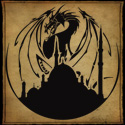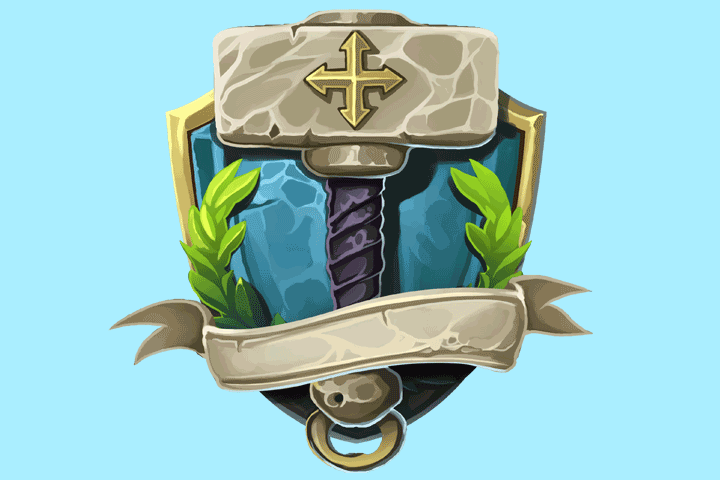Blast Cane
"Surely, you wouldn't deprive an old man of his walking stick?" Uh, yeah- you probably should.
History
The blast cane is a rare and incredibly valuable weapon that is often used by secret agents with a need for easily-hidden melee weapons or by paranoid mages who feel the need for some over-the-top self-protection. The first blast canes were, in fact, not canes at all, but rather staves. These staves were first developed by the elves roughly 500 years before the world of Khiros was invaded by humans from Earth. The elves of the kingdom of Dol'thramar had a tradition wherein all of their magically-gifted children would be sent to wander the land for a century in search of knowledge and wisdom, thereby bringing new ideas and products to their kingdom. The only problem with this system was that these elven youths were often attacked by the many bandits who dwelled in the surrounding woods. Since the young elves had not trained much in the art of hand-to-hand combat, favoring magic to swords, they were often killed or injured by these attacks.
One day, an arcane ranger, whose name is lost to history, was told that his son had been killed by a marauding group of mercenaries while on his quest. In his grief, the ranger became obsessed with developing a tool that young mages could use to defend themselves from attack at close quarters- something that played to their advantages in arcane powers. He went deep into the forest and found a massive Ironwood tree, then cut it down. Ironwood was a very interesting item, since it was as strong as steel, yet incredibly light. This alone would not be enough, though, and so the ranger began to enchant the wood in a specific manner, so that it could store magical energy and then release it as physical force at the wielder's command. When the elf's labors were over, he gave the newly-made staff, along with instructions on making them and using them, to a nephew of his who was about to embark on his journey. The first battle his nephew encountered was between him and a group of eight heavily-armed brigands on the road. When the bodies were finally found, the bandits were found to have been killed with incredible power- every body had limbs shattered and skulls broken. It was as if a giant had fought them instead of a frail young wizard!
When the Congress of Democratic Nations (CDN) and People's Liberation Army of Asia (PLAA) invaded Khiros centuries later, the two factions came into contact with Blast Staves many times, and quickly grasped their value as hidden weapons. Soon enough, just about any Covert Actions Directorate (CAD) agent with an ounce of magic power could be seen with a plain-looking wooden object of some kind. This way, even if they couldn't carry any guns into an area, they could still count on their canes.
Operation
The method of operating a Blast cane is deceptively simple. First, you need to be a mage, or at least have access to arcane energy, somehow. Second, your skin must be in contact with the wood on the weapon. Once these conditions are met, the mage has to control their arcane energy and flow as much of it as they need into the weapon, so that the cane is storing the energy (many mages wear rings or bracelets that store arcane energy exactly for this purpose). Then, keeping that power inside the weapon, the mage must then hit the enemy with the cane. This doesn't need to a powerful blow- it could be as simple as a light tap or poke, and all that energy is unleashed.
By enchanting the Ironwood with a specific series of spells, the cane's crafter makes it so that when the weapon makes contact with any thing other than the person wielding it, it turns all of the arcane energy it carries into physical force (mana points into Newtons, if you need an example) and then adds that to the existing energy of the blow. This means that a powerful enough mage could simply tap the top of an enemy's head and it would have the same effect as having an ogre crush his skull with a sledgehammer. The only problem is that individuals who are new to this form of combat will often waste energy with unnecessary blows, which could leave them without power in the event of another attack. Therefore, anyone hoping to wield a weapon like this properly should take classes to avoid wastage of power.
Secondly, it is possible to overload a blast cane. If too much power is pumped into the cane, then it is possible that when the mage strikes a foe, the cane will explode in his or her hands even as it kills the target. Most professionally-made canes will come with warnings about how much power can be stored, but some of the ancient (and most powerful) ones don't, so it pays to be careful. And besides, whatever strike was made that overloaded the vane was probably overkill anyways.
Appearance
Here's the part about blast canes that special operatives love- they don't actually have to be canes!
The truth is that blast canes are only called that because the cane is their most popular form, since it's stylish, inconspicuous, and gives the wielder an air of either power or frailty, depending on how they play the role. In reality, any number of Ironwood objects are probably blast canes in disguise. These disguised items could be anything, including broomsticks, police batons, children's toys, wooden parts on firearms, or even pens (one infamous CAD agent carried such a pen throughout his entire career as a spy, and killed many an assassin at close quarters by missing the paper he was writing on and 'accidentally' jabbing his would-be-killer). The only thing that limits the size and shape of a blast cane is usefulness in a fight (it wouldn't make sense to create a blast door, for instance), ability to store magic (smaller objects can't store as much energy before overloading), and cost (the Ironwood used to make the cane, as well as the enchantments that give it its power, are remarkably expensive).
Not Registered Yet? No problem.
Do you want Strolenati super powers? Registering. That's how you get super powers! These are just a couple powers you receive with more to come as you participate.
- Upvote and give XP to encourage useful comments.
- Work on submissions in private or flag them for assistance.
- Earn XP and gain levels that give you more site abilities (super powers).
- You should register. All your friends are doing it!
? Responses (13)
Just to tell you, the CDN and PLAA are factions in a world I'll be posting up here sooner or later.
Nice idea; good way to bolster combat abilities of the typical mage.

Thanks, man. Now, the main purpose of this weapon in the period where my game takes place is to provide a discrete method of self-defense for spies (well, at least it's discrete BEFORE he starts sending guys flying left and right). You see, in the world I made, the CDN and PLAA factions make a policy of hiring a large number of mages to act as spies and secret agents. Although these agents are incredibly subtle and often highly skilled in at least one form of martial arts, there are many circumstances where the hammer's more useful than the scalpel. However, until those points, you have to be able to hide that hammer. Therefore, since most of their agents are already mages (magic is very useful when undercover, since it can't be traced back to a specific country and can be used for everything from blasting down a door to hiding in plain sight), the Blast Cane is a natural choice for a weapon.
I'd love one of these and the ability to use it.
Why? Do you often encounter the need to turn people into mush?

It would just make me feel safer living on my own. I'd only use it as a weapon under great provocation.
You could always try carrying a handgun. Turns (parts of) people into mush, but you DO have to learn how to aim . . .

I'm in the UK, handguns are banned after an idiot murdered 16 children and a teacher with them in 1996.
A decent sub, simple and useful.
Nifty item, with a clear purpose and history. I can imagine, though, that wooden items would begin to be viewed with great suspicion in your world, if these weren't at least somewhat rare. Sure, a spy might be able to get away with it once, but surely all operations manuals for the CDN and PLAA would include sections on recognizing and counteracting blast canes?

True enough. However, both sides try to keep the weapons a closely-guarded secret. They know that the other major power, along with a fair number of mages, know about them, but the majority of the populace doesn't quite realize what these weapons are- a state of affairs both sides would rather keep. This is because for every minute they spend fighting each other, they spend half an hour dealing with criminal gangs and terrorists- individuals who either can't hire mages or who can only attract mages that didn't have the benefit of learning about the blast canes, or the finer points of using them. Therefore, since most enemy groups are in the dark, both the CAD and the PLAA's Shadow Bloc (their secret police/paramilitary operations/secret assassination agency) have agreed that when it comes to blast canes, the benefits outweigh the flaws.

Also, they are very rare, which is why the only people you'll find wielding them on a regular basis are spies (who tend not to identify themselves, as you could understand). The process behind their creation is very expensive, time-consuming, and difficult, which limits just how many can be produced. This isn't a mass-produced weapon at all- it's a rare and valuable tool that's only wielded by the finest warriors in the competitive world of espionage.
Its an interesting wrapping for a fairly straightforward item. It certainly can fit into many game systems.
It does have a fairly utilitarian origin - if the ranger could so easily produce the item, with just the addition of Ironwood, than I would expect the item to not be that rare and special at all.
